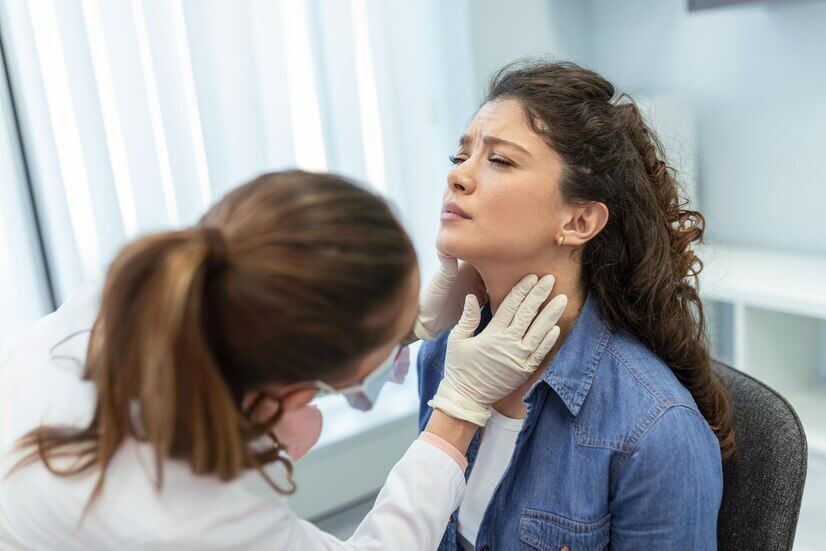Pakistan has been suffering from different health problems throughout history, and various factors have played their role in such scenarios. If we talk about the most common diseases that affect the Pakistani nation are sugar, iron deficiency, cardiac problems, cancer, etc. All of these diseases have different types. For example, if we talk about cancer it is among the prevalent diseases worldwide, and one of the giant contenders in Pakistan for leading people to death. Cancer has various types, while some of the most common are liver cancer, lung cancer, blood cancer, breast cancer in women, etc., and this blog aims to tell you about breast cancer in Pakistan.
If we talk about the parts of the discussion in this blog, we will let you know about the situation of breast cancer in Pakistan and the factors playing a role as a cause of this fatal issue. Moreover, we will discuss the hidden crises and ideas to break the silence and take a stand against breast cancer. Moreover, right after the conclusion, we will answer your questions. So, stand against this particular cancer type and play your part with our guide.
Breast Cancer in Pakistan
Breast cancer is the second most common cancer among women worldwide, after lung cancer. The more excellent survival rates of Western European nations are associated with sophisticated screening and treatment facilities despite their higher incidence rates.
However, 89% of diagnoses in Pakistan occur at a later stage due to a variety of constraints, such as age, job position, and dependence on conventional therapies. Cultural sensitivity and fear of stigmatization further impede treatment decisions.
With an estimated 80,000 new cases identified annually, or around 220 women per day, breast cancer is a significant concern in Pakistan. The good news is that therapy can be life-changing if the condition is identified early. Research indicates that around 80% of women with stage I breast cancer will survive for five years after receiving a diagnosis.
But in Pakistan, the road to success isn’t always easy. It might be difficult for women to have regular examinations and screenings due to limited access to healthcare, particularly in rural regions. Furthermore, the stigma associated with breast cancer in society might prevent women from getting treatment, which delays detection. Furthermore, efforts to educate women about the condition and the value of early diagnosis have not always been successful, even when they do manage to have an impact.
Reasons for Breast Cancer in Pakistan
While it’s challenging to pinpoint specific causes, several risk factors are associated with an increased likelihood of developing breast cancer. It’s important to note that these factors can vary among individuals, and the exact cause of breast cancer is often a combination of genetic, hormonal, environmental, and lifestyle factors.
1. Genetic Factors
Inherited mutations in the BRCA1 and BRCA2 genes markedly elevate breast cancer risk. People who have a family history of breast cancer may be at a higher risk due to genetic variables that can influence the disease’s occurrence.
2. Hormonal Factors
After menopause, long-term usage of hormone replacement treatment, especially progesterone and estrogen, has been linked to an increased risk of breast cancer. Women using hormone replacement therapy (HRT) to treat menopausal symptoms should take note of this.
3. Reproductive and Menstrual History
A slightly increased risk of breast cancer may exist for women who become non-parents (nulliparity) or who have their first child later in life. Menarche, the early start of menstruation, and menopause, the later start of menopause, are linked to extended lifetime exposure to estrogen and may raise the risk of breast cancer.
4. Lifestyle and Environmental Factors
Breast cancer risk increases with obesity and a diet heavy in saturated fats. The risk may be decreased by maintaining a healthy weight with a balanced diet and frequent exercise. There is a link between excessive and regular alcohol use and a higher risk of breast cancer.
5. Environmental Exposure
One established risk factor for breast cancer is exposure to ionizing radiation, particularly during early life. Environmental exposures and medical procedures like radiation therapy might fall under this category.
The Hidden Crisis
Now, let us talk about the hidden crisis of breast cancer in Pakistan. Though the previous passages were regarding the same topic, those were reasons contributing individually; now we are talking about collective reasons or the crisis that is causing breast cancer. This discussion has three parts: lack of awareness, limited access to screening and diagnosis, and stigma and social challenges. Let us discuss all in detail here!
1. Lack of awareness
The shockingly low knowledge of breast cancer persists in Pakistan’s rural, busy environments. Women, particularly in disadvantaged communities, live their lives without a breast health compass. Discussions regarding breast health are a timid whisper in the wind due to cultural influences and taboos that contribute to the silence around this vital subject.
2. Limited access to screening and diagnosis
Mammograms are hard to get in Pakistan. There aren’t enough machines or skilled medical workers. This makes things even worse for women who need this test to help them stay healthy. Often, they have to wait in long lines outside hospitals and clinics. This makes it especially hard for women who don’t have much money because they can’t afford the wait or the cost of the test itself.
3. Stigma and social challenges
Pakistani society’s heavy cloak of shame surrounding breast cancer leads to delayed diagnoses and treatments. Women who struggle with this silent enemy encounter social and emotional isolation in addition to physical struggles. The long-lasting stigma associated with breast cancer keeps people from having honest discussions and exacerbates their feelings of isolation.
4. Breaking the Silence
Now when we are aware of the situation and reasons for breast cancer in Pakistan, it is time to break the silence and empower women through awareness campaigns. Moreover, the government should also improve access to healthcare to keep women away from such diseases. Finally, we should combat stigma and consider motivating women through open communication.
Empowering women through awareness campaigns:
NGOs and community organizations that put in endless effort to promote awareness appear as rays of light amidst the difficulties. Culturally aware advertisements strike a chord with Pakistani women, shattering stereotypes with poignant messaging.
1. Improving access to healthcare
This narrative flows with a forceful plea for more significant government funding. There is an urgent need to provide accessible and reasonably priced breast cancer screening and treatment alternatives. The scenario becomes positive as the healthcare system develops and doctors start to stand out as sources of encouragement.
2. Combating stigma and promoting support
Education and honest communication are practical tools in the fight against stigma. Women with breast cancer develop a network of compassion and empathy through patient support groups and counseling programs, which become lifelines.
Conclusion
Breast cancer is a hidden issue that many women in Pakistan’s rural areas must cope with. It is a major medical issue that frequently remains unnoticed due to systemic and cultural obstacles. Organizations are putting a lot of effort into raising awareness of breast cancer, pressing the government to increase funding for healthcare, and trying to shift public perception of the disease. As Pakistan grapples with this significant issue, everyone agrees that cooperation is essential in the battle against breast cancer.
Q. What is the importance of early cancer diagnosis?
Early cancer diagnosis is critical to unlocking better outcomes. When caught early, tumors are smaller, haven’t spread, and respond better to treatment, often leading to higher cure rates and even more straightforward, less invasive options. It’s like catching a fire before it blazes – you can extinguish it faster and minimize the damage.
Q. Can a person with breast cancer survive for 20 years?
Many patients who are diagnosed and treated for localized or regional breast cancer go on to survive for 20 years or more. Twenty years is a long time to live when you have distant breast cancer.
Q. Can a man develop breast cancer?
Males can indeed get breast cancer, but this is far less prevalent than it is in women. In actuality, males are diagnosed with breast cancer in just 1% of cases. A breast lump is often firm, painless, and stationary inside the breast. The inward turning of the nipple. Dripping liquid, sometimes with blood splattered over it. A persistent redness or irritation surrounding the nipple.
Q. Is it possible to fully cure breast cancer?
Complete remission is a possibility for breast cancer. If a person receives therapy in the early stages of the illness, their prognosis usually improves. You may not be able to cure advanced breast cancer. On the other hand, therapy can lessen symptoms and increase longevity.










